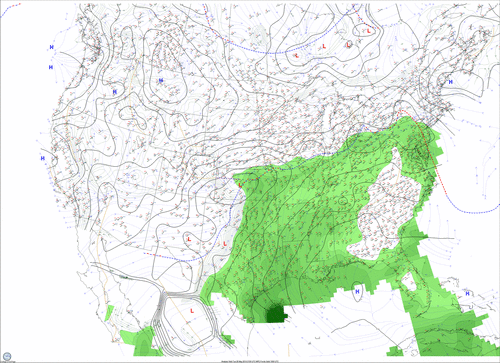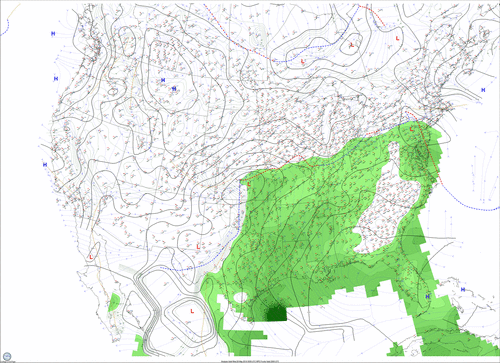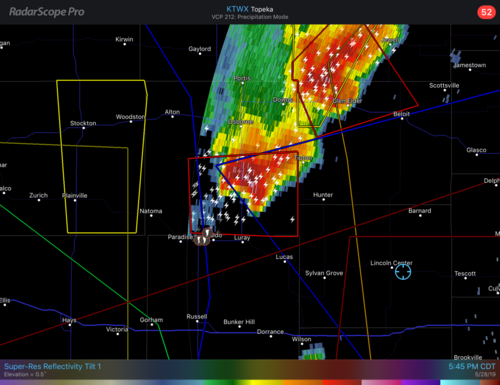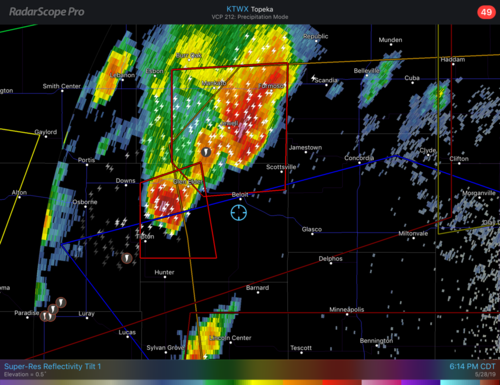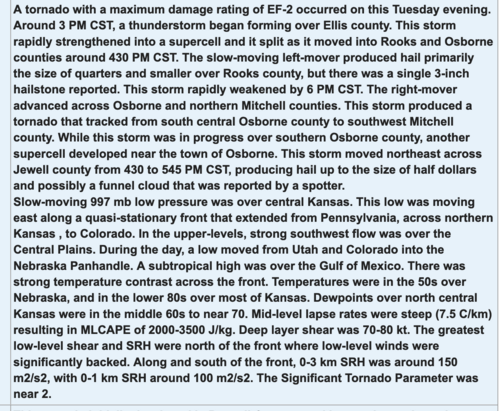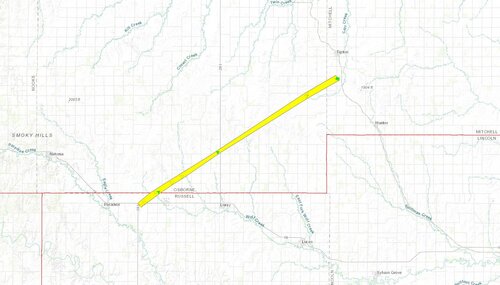Brian McKibben
EF3
Looks like our southwesterly flow is on its way out today and tomorrow. The longwave trough is now positively tilted. Could see 50-70kt at 500 hPa throughout the warm sector. The warm front looks to set up near the I-80 corridor. 12z NAM is forecast MLCAPE near 4000 along DL into KS/OK and along the WF.
I haven't looked at the WF much. My focus is along the DL into OK. Several CAM solutions continue to show convection developing around 22z. 0-1km SRH doesn't look overly impressive, but greater than 150 m2/s2 could make things interesting. 12z sounding form OUN and FWD showed a pretty stout CAP. This should suppress storm converage if storm can form. Large hail seems likely with bulk shear >40 kts and large CAPE. If I was chasing i would set up west of OKC with good N/S road options to get into place.
Be safe everyone.
I haven't looked at the WF much. My focus is along the DL into OK. Several CAM solutions continue to show convection developing around 22z. 0-1km SRH doesn't look overly impressive, but greater than 150 m2/s2 could make things interesting. 12z sounding form OUN and FWD showed a pretty stout CAP. This should suppress storm converage if storm can form. Large hail seems likely with bulk shear >40 kts and large CAPE. If I was chasing i would set up west of OKC with good N/S road options to get into place.
Be safe everyone.

